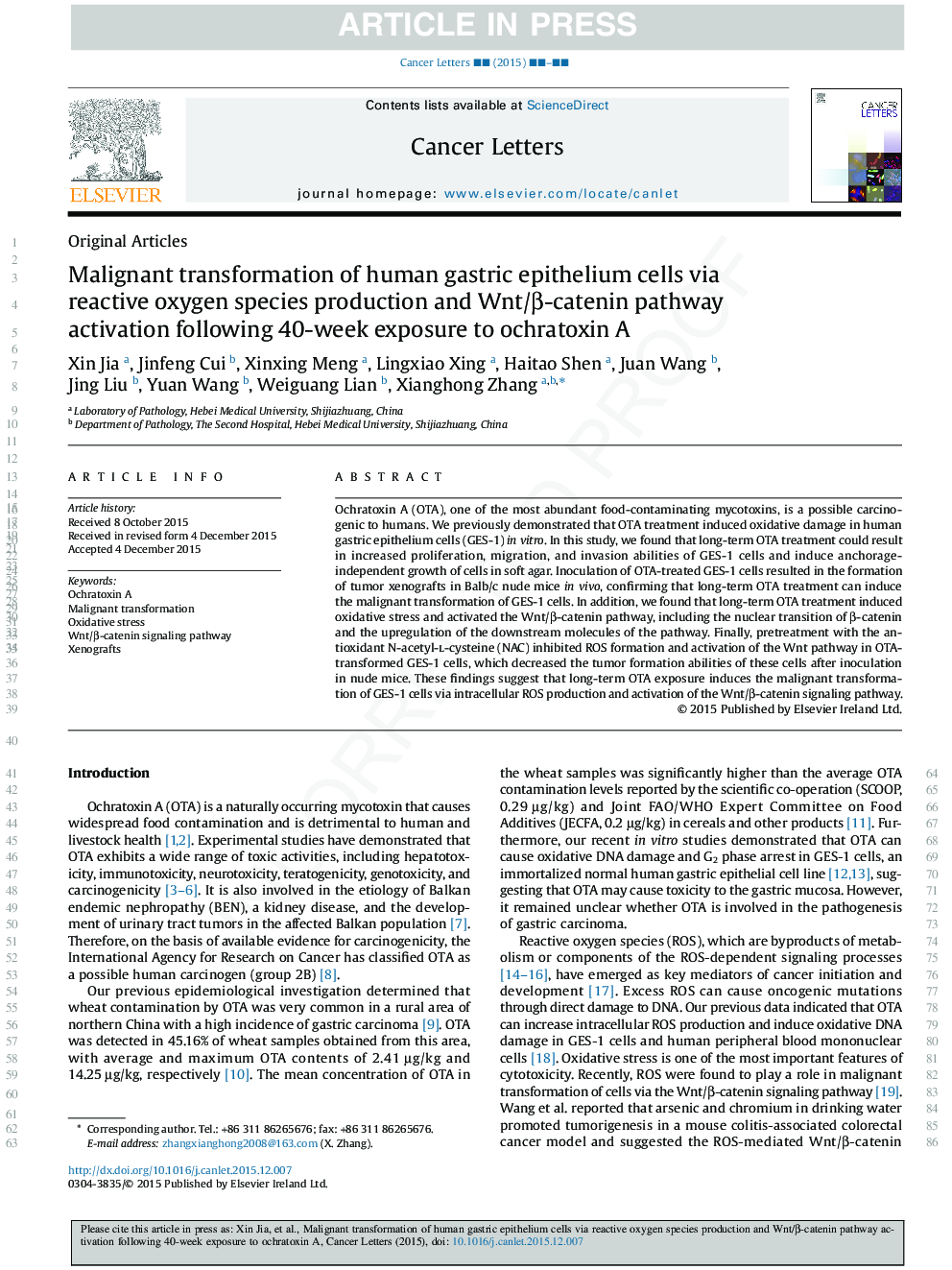| Article ID | Journal | Published Year | Pages | File Type |
|---|---|---|---|---|
| 10899386 | Cancer Letters | 2016 | 12 Pages |
Abstract
Ochratoxin A (OTA), one of the most abundant food-contaminating mycotoxins, is a possible carcinogenic to humans. We previously demonstrated that OTA treatment induced oxidative damage in human gastric epithelium cells (GES-1) in vitro. In this study, we found that long-term OTA treatment could result in increased proliferation, migration, and invasion abilities of GES-1 cells and induce anchorage-independent growth of cells in soft agar. Inoculation of OTA-treated GES-1 cells resulted in the formation of tumor xenografts in Balb/c nude mice in vivo, confirming that long-term OTA treatment can induce the malignant transformation of GES-1 cells. In addition, we found that long-term OTA treatment induced oxidative stress and activated the Wnt/β-catenin pathway, including the nuclear transition of β-catenin and the upregulation of the downstream molecules of the pathway. Finally, pretreatment with the antioxidant N-acetyl-l-cysteine (NAC) inhibited ROS formation and activation of the Wnt pathway in OTA-transformed GES-1 cells, which decreased the tumor formation abilities of these cells after inoculation in nude mice. These findings suggest that long-term OTA exposure induces the malignant transformation of GES-1 cells via intracellular ROS production and activation of the Wnt/β-catenin signaling pathway.
Keywords
Related Topics
Life Sciences
Biochemistry, Genetics and Molecular Biology
Cancer Research
Authors
Xin Jia, Jinfeng Cui, Xinxing Meng, Lingxiao Xing, Haitao Shen, Juan Wang, Jing Liu, Yuan Wang, Weiguang Lian, Xianghong Zhang,
